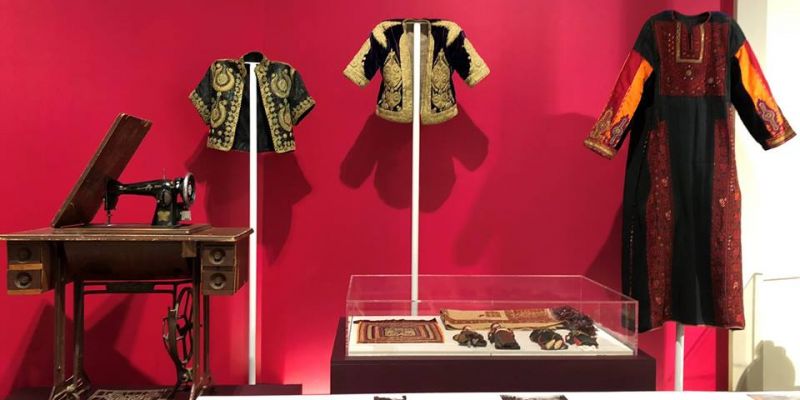Embroidery Economics اقتصاديات التطريز

-
التاريخ24 - Jun 2018
-
الساعة02:00 - 03:00
-
العنوانالمتحف الفلسطيني, بيرزيت, رام الله والبيرة
-
مشاهدة1116
جلسة نقاش تفاعلية
اقتصاديات التطريز
المتحدثة: د. سامية البطمة
الأحد، 24 حزيران |2:00 - 3:00
لطالما ارتبط التطريز بالسوق التجاري، من خلال تبادل الأقمشة وإنتاج المنسوجات على أقل تقدير، إلا أن هذه الحرفة صُنعت تقليديًّا للاستخدام الشخصيّ خارج نطاق التداول التجاريّ في الأسواق، وهذا ما اختلف بعد النكبة، فقد تغير موقع التطريز في حياة النساء وتبدلت علاقته مع سوق العمل والمال، وبدأ يحتكم إلى بنى إنتاج مختلفة. انتزعت هذه المرحلة النساء الريفيات من حياتهن الزراعية المكتفية ذاتيًّا وأجبرتهن على البحث عن أعمال ووظائف مأجورة. وتأسست في مرحلة ما بعد النكبة جمعيات خيرية تهدف إلى دعم النساء وعائلاتهن وتأمين الوظائف لهن، لتشكل ركائز للمقاومة السياسية، إلا أن هذا كان أحد نتائج ضم النساء إلى سوق العمل المأجور، الذي أدى إلى جانب ذلك أيضًا إلى ارتهان التطريز إلى أنساق الإنتاج الرأسمالية. واليوم يهيمن انتشار المطرزات الفلسطينية على هيئة سلع تجارية، الأمر الذي يستدعي أسئلة مركّبة تتعلّق بالتطريز كمنتج.
سنثير النقاش مع أستاذة الاقتصاد في جامعة بيرزيت د. سامية البطمة حول التحولات في شكل إنتاج التطريز، والأبعاد السياسية والاجتماعية التي خلّفتها هذه التحولات، وتأثير ذلك على واقع النساء وعلى جوهر التطريز، الذي لا يصلح تمامًا للتسليع، نظرًا لأنّ إنتاجه يتطلّب وقتًا طويلًا، ومهارة يدويّة لازمةً لتصنيع قطع متمايزة تُعمّر طويلًا، فكيف يبدو الحال حين تصلنا القطع المطرزة من الصين؟
الحديث باللغة العربية
#غزْل_العروق
Interactive Discussion
Embroidery Economics
Speaker: Dr. Samia Butmeh
Sunday, June 24 | 2:00 - 3:00 pm
Embroidery has always been connected to a market of sale, not least through the trade of textiles and the production of fabrics. Its labour, however, tended to be personal: historically, embroidery was done by a woman for her own wear. The Nakba significantly altered the structure of embroidery’s production. Although there were embroidered items made for market before 1948, the Nakba split rural women from their self-sufficient livelihoods in agriculture, forcing them to seek waged work instead. After the Nakba, many charities that support women and their families as well as provide jobs for them were established to constitute the pillars of political resistance. However, this was the outcome of integrating women in the labour market, which led in its turn to governing embroidery by capitalist modes of production. Nowadays, Palestinian embroidery is prevailing as a commodity for consumption and this fact stirs complex questions concerning embroidery as a product.
We will discuss with Dr. Samia Butmeh the transformations in the production modes of embroidery and the political and social dimensions that resulted from such transformations. Also, the lecture will draw on how the transformations affected the reality of women and the essence of embroidery, taking into consideration that that embroidery requires long time in the making and manual skills to produce unique pieces that can live for a long time. Here, we ask ourselves: what is it like to import embroidered pieces from China?
The talk will be in Arabic.
#LabourofLove